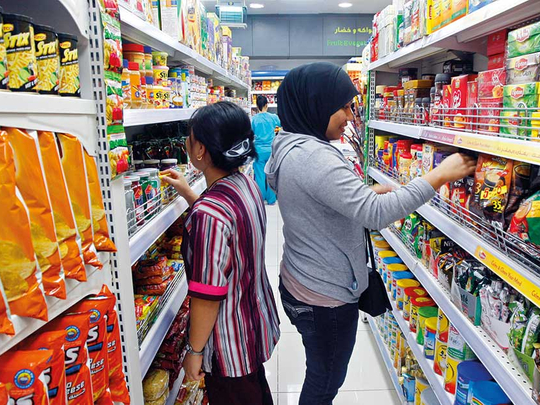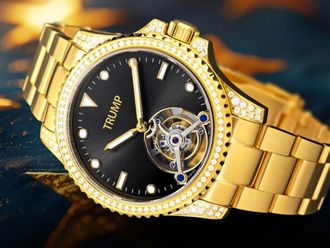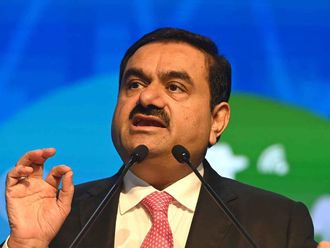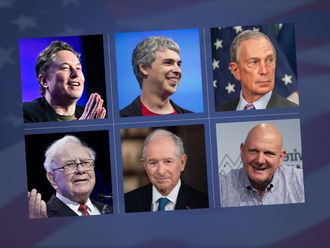
Dubai
Getting on a supermarket shelf in the UAE was never easy … these days it’s getting more so. Especially for new brands trying to catch the shopper’s eye.
“Just to get a “listing” with a supermarket — which means having a bar code on their internal systems — could cost Dh10,000-Dh15,000 per product per outlet,” said an industry source at consumer goods firm. “These are what supermarkets are demanding of new entrants … and they are getting it.
“For brands in multiple product categories, they will have to pay this one-time fee of Dh10,000-Dh15,000 on each SKU (stock keeping unit). All this just to get onto a shelf.”
It doesn’t end there. There are other costs to determine where these brands end up being placed on the shelf. “There are category-specific shelf visibility charges, which determines whether a particular brand is placed at eye level or below,” said Sakib Rahman (right), CEO of Allianz International-Holding, which is into personalcare products under the “Dr Neem” branding. “That could in turn cost Dh8,000-Dh10,000 a month.
“Given such high cost of entry, retaining shelf space for new or second-tier brands has become more difficult in the UAE.”
Surprising as the number of supermarkets and neighbourhood stores have proliferated in recent years. In fact, this is the one category within the wider retail sector that has recorded consistent growth through this decade, and even through the dip in the last two years.
With all those supermarkets opening, more consumer brands are trying to rush in … whatever be the cost of getting in. It doesn’t end there.
“Earlier, new entrants just had to compete with the bigger, more established labels,” said Sanjay Duggal (right) of Middle East Franchising. “Now, they have to contend with the increased proliferation of private labels directly from the supermarket/hypermarket operators. This, typically, relegates the new ones to third in the list of priorities for increasingly cautious supermarket chains.
“I would say that the main barrier to entry is whether the brand adds a distinct value and can contribute to sustaining consumer loyalty.”
Duggal’s observation about private labels is spot on. Head into any supermarket and the shopper will come across a product bearing the operator’s name. These private labels now extend to anything from detergents to pickles, and at prices lower than what the category leaders charge.
According to market sources, private labels are turning into an extremely lucrative revenue stream for supermarket chains. More so, when local consumers are getting so conscious about spending even on everyday items.
Some recent entrants have traded on their generic status in their categories for greater visibility here. Or started off by targeting a certain consumer demographic. The Indian beverage brand “RoohAfza” did a bit of both.
“We believe that RoohAfza is a highly specialised product that is very high on recall and loyalty with the Indian diaspora, who will be the early adopters,” said Mansour Ali (right), chief sales and marketing officer at Hamdard India, which owns the label. “RoohAfza is a heritage brand and not a new name for most of the population in the UAE, as we control 45 per cent of a Dh600 million concentrated syrup market in India.
“Since Indian consumers form a considerable population in the GCC, we expected that would keep the shelf turnover high. RoohAfza is now present in 90 per cent plus outlets of supermarkets in the UAE through our distributor here in less than a year. And despite the overall beverages market is a crowded category in the UAE and Gulf.”
But not every entrant can trade on name recognition. Many believe that options need to be found outside of supermarkets for the initial exposure in the UAE.
Rahman, for one, believes there are ways to circumvent the supermarkets’ bargaining power. “How long can brand owners keep paying such fees just for being listed or shelf visibility,” he said. “Not everyone can deploy the kind of marketing budgets some of the FMCG giants have. They have to look at other options.”
Rahman believes they should be looking elsewhere for the volumes and brand exposure. In particular, the small grocery store or “baqalas”.
“New and even existing brands should aim for higher exposure in these neighbourhood stores,” said Rahman, whose company is now getting into food staples. “If the big supermarkets try and place more hurdles and demand more pay for more visibility, we will discontinue. Because there’s always a neighbourhood store, however small, nearby that will still be carrying us.”












